In our still relatively brief existence, humans have evolved our way to an era many are now calling the Anthropocene – a new geological epoch defined by human impact on Earth. But our unparalleled creativity is a double-edge sword. We are undeniably contributing to many of the global challenges now facing our species, and all species who share this planet.
At the same time, it is because of our impact that the world needs human innovation now more than ever. We know we must stabilize our climate. We know we must meet the resource needs of a growing global population. We know we must save the ecosystems that sustain all life. And we know we won’t get there on our current path.
Science makes new paths possible. It underpins the lives of each and every one of us—from the medicines we give our children to the vast networks of information at our fingertips. And at The Nature Conservancy, science has guided everything we do for more than 65 years. Today, more than 600 Conservancy scientists are working all over the world to discover and apply solutions to the biggest challenges facing people and the planet. From new bio-energy solutions to the increasing mapping precision of drones, here are some of our favorite recent scientific innovations.
-
Facial Recognition Technology, for Fish
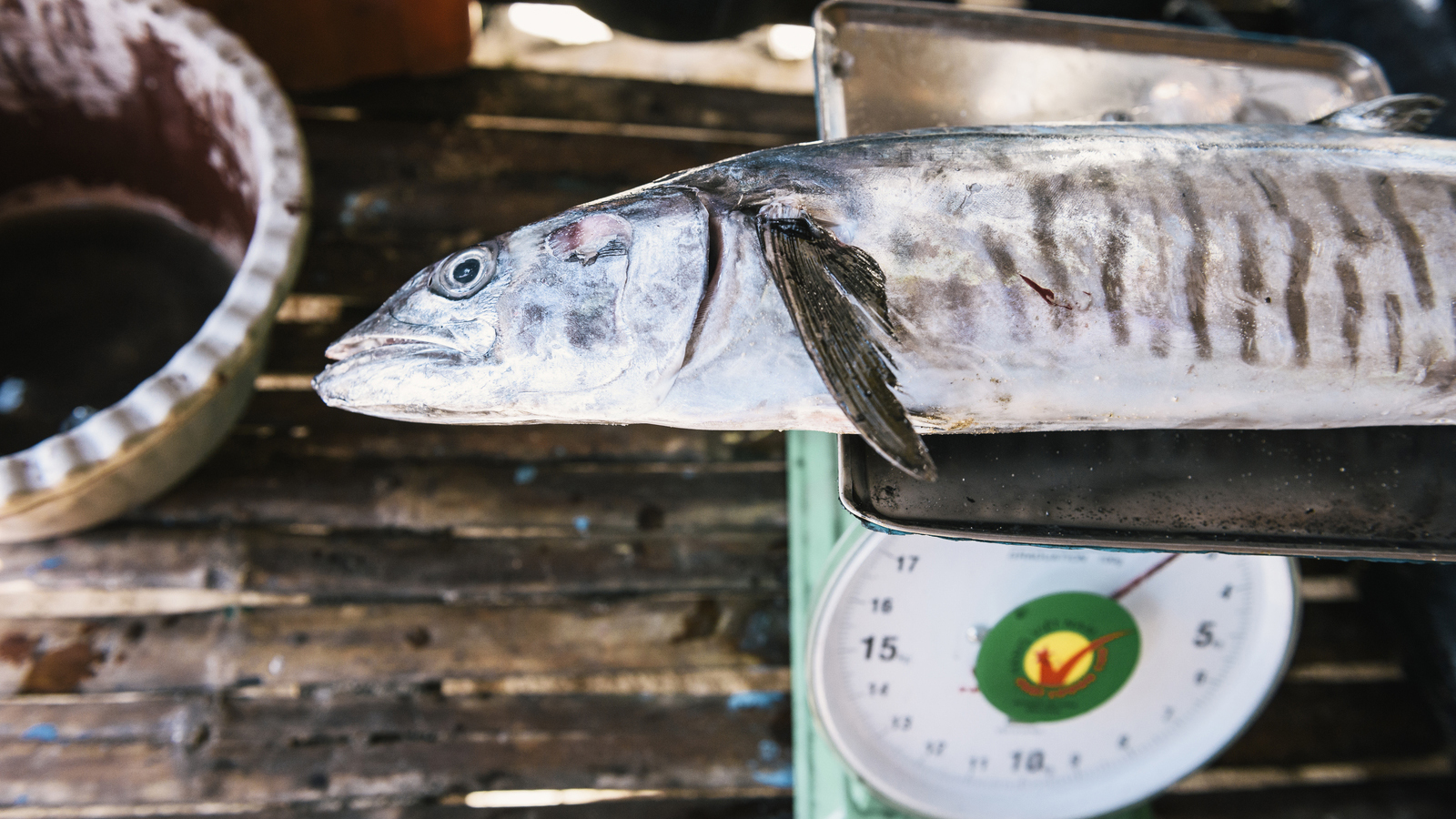
Fish are prepped to be weighed and measured. With the help of the Nature Conservancy and other partners, fisherman have learned the best practices for fishing sustainably. Photo © Kevin Arnold How do you recognize a fish’s face? Serious question.
Consider the state of global fisheries. The old business adage, “If it doesn’t get measured, it doesn’t get managed” applies to fisheries, too. And of more than 10,000 fisheries in the world, fewer than 440 are assessed.
With fish catches taking place at sea, and on many boats, it’s impossible for managers or conservationists to be there monitoring fish species and harvest levels. That’s why The Nature Conservancy is developing a system called FishFace to collect, organize and share data essential to sustainable fisheries management.
FishFace uses facial recognition technology. This is similar to the computer applications capable of identifying a person from a digital photograph or video frame. For people, it is often used in solving crimes. FishFace will be used to identify information on the species and numbers of fish caught, as well as measuring the length of each fish – all information needed to assess the condition of the fishery and manage it well. Every fish caught and processed can then be identified and traced through the supply chain with accurate information of what it is.
It’s being tested in Indonesia’s deep-water snapper and grouper fisheries and in the Western Central Pacific tuna fisheries with the potential to be rolled out for fisheries elsewhere.
-
Batteries Powered By Blood

Battery research © U.S. Department of Energy Batteries powered by blood or salt instead of lithium? Alternative energy production modeled on the cells of giant clams? Science to determine how soil can be used to fight climate change? This isn’t science fiction or even wishful thinking, it’s the ongoing and applied work of The Nature Conservancy’s NatureNet Science Fellows.
The fellows work on the future-forward science the world needs to mitigate climate change, including nanotechnology research and development for viable large-scale clean energy production and storage.
The program is a partnership between the Conservancy and leading research universities (including Penn, Harvard, Yale, Princeton, UCLA, Stanford, Cornell and others), and “signals to the world that conservation needs to base its work not just in ecology and biology, but in an interdisciplinary approach to science and evidence,” says Roy Vagelos, a founding funder of the NatureNet Science Fellows program, member of the Conservancy’s board of directors and former president, CEO and chairman of Merck & Co.
Vagelos sees the program as a way to “push the Conservancy and the world in new and necessary directions as we work to solve global sustainability challenges around energy, water and agriculture.”
-
Camera Traps: What Critters Do When We’re Not Watching
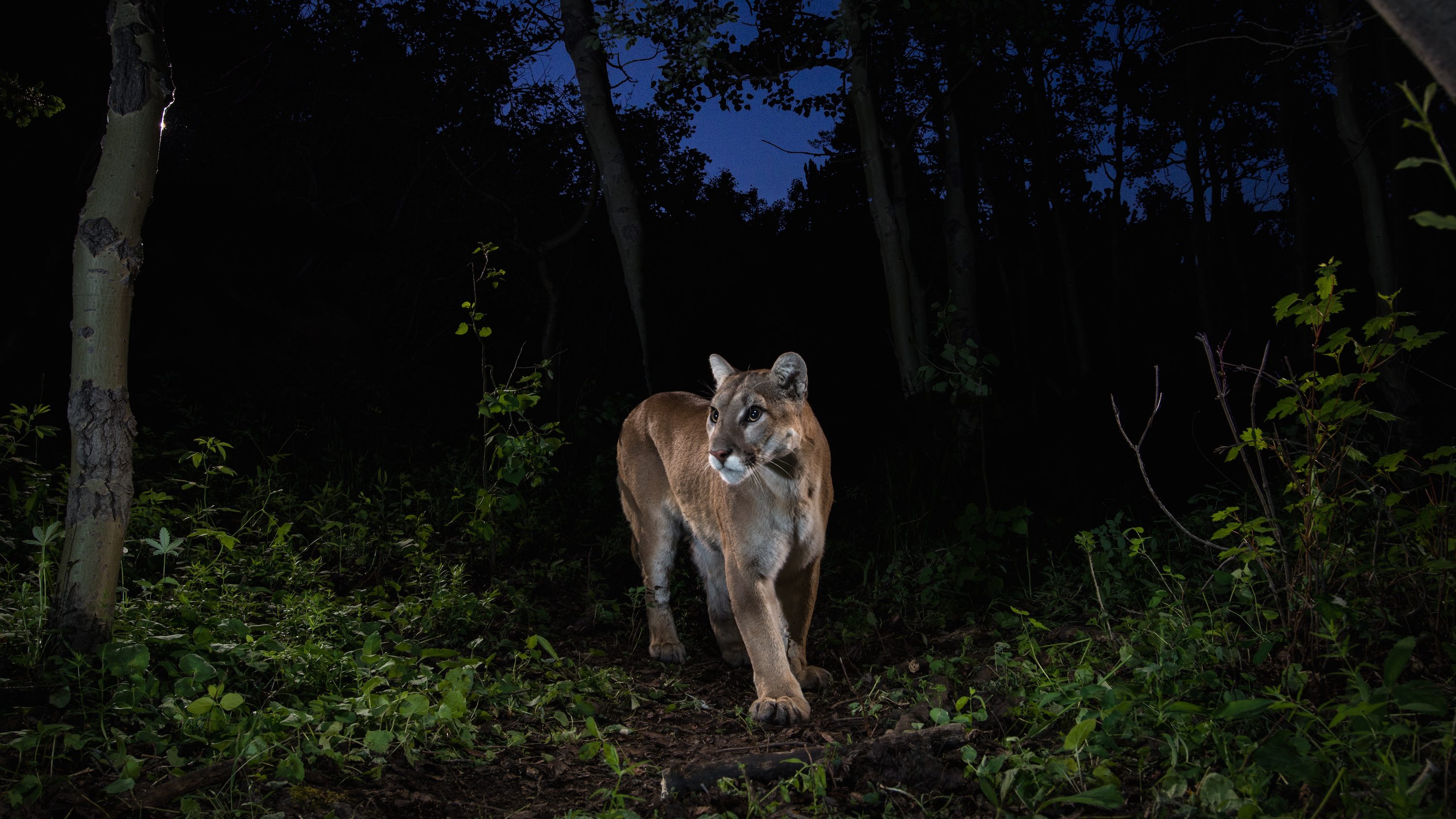
Photo: © Jonathan Armstrong Perhaps no technology has connected more people to the wonder and mystery of the natural world than the camera, and its direct descendant: the ever-more versatile and useful camera trap.
The development of the camera trap itself is a story of human curiosity and innovation rooted in the cultural fascination with nature photography that flourished in England around the end of the 19th century. That was when photographer George Shiras developed one of the first successful remote camera traps by hacking together a camera, a flashlight and an ingenious system of trip wires. When wild animals tripped the wires they photographed themselves. No human needed to release the shutter.
And sure, using cameras to photograph and record wild animals remotely – without human presence in a blind or behind a telephoto lens – seems obvious now, but it took a fair amount of innovation and imagination to get where we are today: with compact, low-weight, long-lived, high resolution, motion-sensitive cameras that can be strapped to trees or mounted on rocks or otherwise left unattended in the wild to record and store massive amounts of high resolution images, sounds, videos and other data collected over weeks or months.
Modern cameras can be powered by solar energy, withstand humidity, heat, rain and cold (really cold – some remote cameras are rated to -20 F), use infrared and motion sensors instead of trip wires, and even transmit real-time images over cellular networks to the smart phone in your pocket.
All of which makes the camera trap one of conservation science’s most versatile tools. Scientists all over the world – from researchers to citizen scientists – use them. Some scientists even use them to capture gallery-worthy images. At the Conservancy, scientists continue to develop innovative ways to use camera traps to measure biodiversity conservation, including watching for Venus flytrap poachers in North Carolina’s Green Swamp, measuring the impact of feral camels on watering holes in Australia’s remote Martu country, monitoring the effectiveness of prescribed fire, and documenting some of the world’s most elusive creatures, from snow leopards in Mongolia to birds-of-paradise in Papua New Guinea.
-
Drones, Lasers and Artificial Intelligence: New Technologies Revolutionizing Field Science
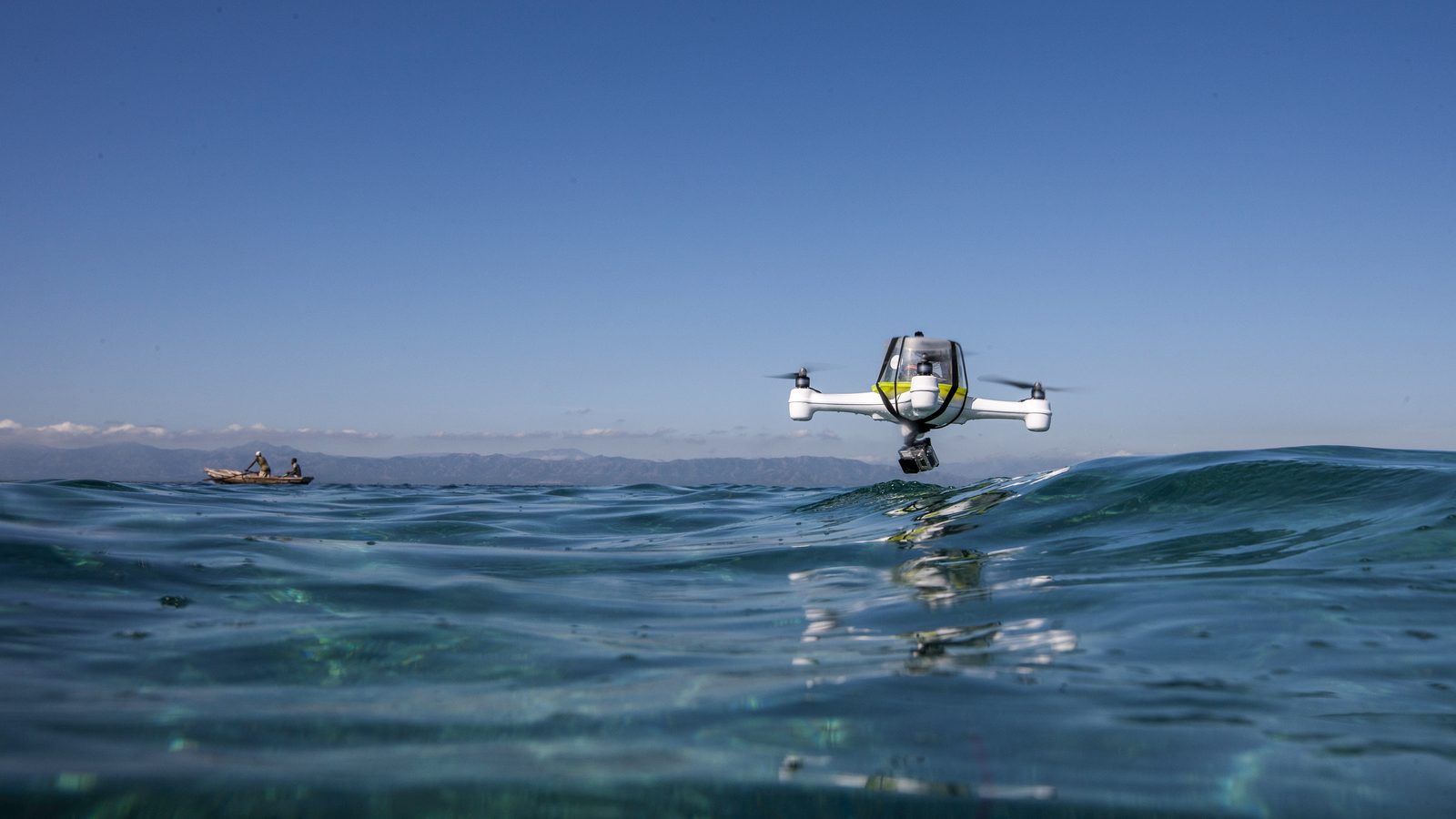
A waterproof, remote-controlled drone, equipped with a video camera prepares to survey bottom topography off the coast of Haiti. © Tim Calver If you want to get technical about it, the practice of remote sensing began in the 1840s, when intrepid observers combined cameras and balloons to take pictures of the Earth below. Over the next 170 years, remote sensing (the term itself was coined and defined by Evelyn Pruitt of the U.S. Office of Naval Research in the 1950s) has moved so far beyond those first aerial photographs it would make Jules Verne’s head spin.
Today, remote sensing – the art and science of “identifying, observing, and measuring an object without coming into direct contact with it” encompasses an array of tools – from high-resolution satellite imagery to lasers that measure minute shifts in glaciers and shorelines to small, unmanned aerial vehicles (drones) that can photograph, map and record vast amounts of data to resolutions of 2 centimeters.
Conservancy scientists, like Steve Schill, are at the forefront of developing and applying all the tools of remote sensing – including drones – to inform and guide conservation and development decisions around the world. In Gabon, scientists used drones to map 9000 km2 of otherwise largely inaccessible wetlands. In the Caribbean, Schill mapped and surveyed habitats above and below the water with a drone that could take off and land on water. (The secret to its amphibious capabilities: a common Tupperware container. Schill and one of his students modified an existing drone to make it both buoyant and waterproof). In the United States, scientists are testing the facility of drones equipped with multispectral cameras for monitoring water quality in small streams and wetlands.
As UAV technology continues to advance – drones get smaller, more capable and less expensive – their utility for field science may be almost limitless.
Other technologies have similarly advanced. Terra-i, is an artificial intelligence program that uses real-time rainfall data to predict how green a given habitat should be — and then matches that prediction up against images of the habitat from an Earth-monitoring satellite. And lidar, a way of remotely mapping forests with lasers, has proven to be an effective and accurate tool to measure the effects of reduced-impact logging in Indonesia.
-
Bioacoustics: Capturing the Rainforest’s Wall of Sound

Acoustic sampling recorders. Photo © Zuzana Burivalova Stand outside in any natural environment, close your eyes, and listen. You’ll hear birds calling, or crickets chirping, or frogs croaking. Those sounds of the natural world are bioacoustics, and they’re more than just a nice soundtrack — they’re valuable data for scientists and conservationists.
An emerging field of research, called bioacoustics, is now using the entire scope of data, often called the soundscape, as a rough measure of biodiversity.
Researchers deploy sensitive acoustic and ultrasonic recorders in the forest. The acoustic recorders capture sounds between 1 and 24 kilohertz, roughly within the normal range of human hearing, including vocalizations from birds, some bats, frogs, mammals, and most insects. The ultrasonic recorders pick up sound up to 96 kilohertz, allowing us to gather data on bats and insects that vocalize at frequencies beyond the range of human hearing.
These acoustics provide a rough estimate of biodiversity, enabling researchers to determine if conservation activities are working. Bioacoustics is currently being deployed by The Nature Conservancy to determine the best forest management practices for wildlife conservation in Borneo, and to determine the conservation effectiveness of land use plans in Papua New Guinea.
-
Precision Agriculture: Saving Money, Saving Water
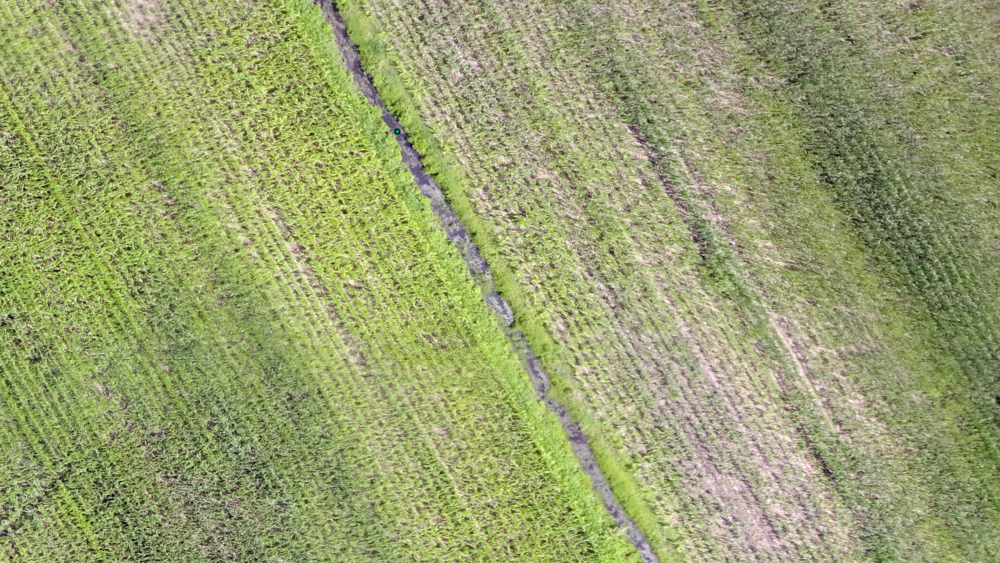
Corn fields shot by a drone with a multispectral camera. Photo © The Nature Conservancy (Jon Fisher) In many parts of the world, farmers rely on irrigation to water their crops. It’s a very effective tactic for growing food in more arid regions, but it can also result in a lot of wasted water. Water can be lost to irrigation, and areas like wetlands or rock outcroppings where crops don’t grow are often watered too.
Often, farms treat large fields as a single unit, applying the same amount of water (or fertilizer or pesticide) across the entire area. But conditions can vary widely, so a lot of resources end up wasted.
Farmers are increasingly looking to precision agriculture to reduce costs and to reduce inputs. Using a combination of technologies – including drones, computer applications and sensors – farmers can determine the right levels of inputs for each square foot of a field.
Improvements to irrigation technology and precision agriculture are being deployed by The Nature Conservancy and partners in the Flint River of Georgia, where they are saving billions of gallons of water a year while still producing crops. The water that doesn’t go onto fields remains for wildlife, like native fish and imperiled freshwater mussels. At Idaho’s Silver Creek, a globally famous trout stream, the brewer MillerCoors has worked with the Conservancy to install new sprinklers, nozzles, and computer-controlled irrigation on adjacent farms that save millions of gallons of water every day.
-
Soil Ravioli and Bat-Saving Bananas

A little brown bat successfully treated for white-nose syndrome is about to be released. Photo © Bat Conservation International Savvy conservationists are increasingly looking to other research fields, new industry developments and even local home supply stores to find the solutions to challenging conservation problems.
A common bacterium being tested to inhibit fungal growth on supermarket bananas was found to also be the first successful treatment for bats suffering from the devastating White-Nose Syndrome.
Oregon conservationists struggled to find ways to get native sagebrush seeds to survive planting – until they created a special soil mix using a pasta maker. These “ravioli” seed pellets have a 70 percent better chance of survival than if the seeds were just scattered on the land.
Advances in how we understand microbes have applications from healthcare to creating new materials. Microbes can also assist in conservation. For instance, soil microbes may be the best way to attack cheatgrass, an invasive, non-native plant that has thus far proven impervious to other control measures.
And sometimes research finds solutions at the local hardware store. Using PVC pipe and a generator, conservationists can create the sounds of running water that lure migratory shad into shipping locks. This gets them over dams and to their spawning habitat. On Florida’s Apalachicola River, this simple fix increased the shad getting past the dam from 10,000 fish to 250,000 fish in two years.
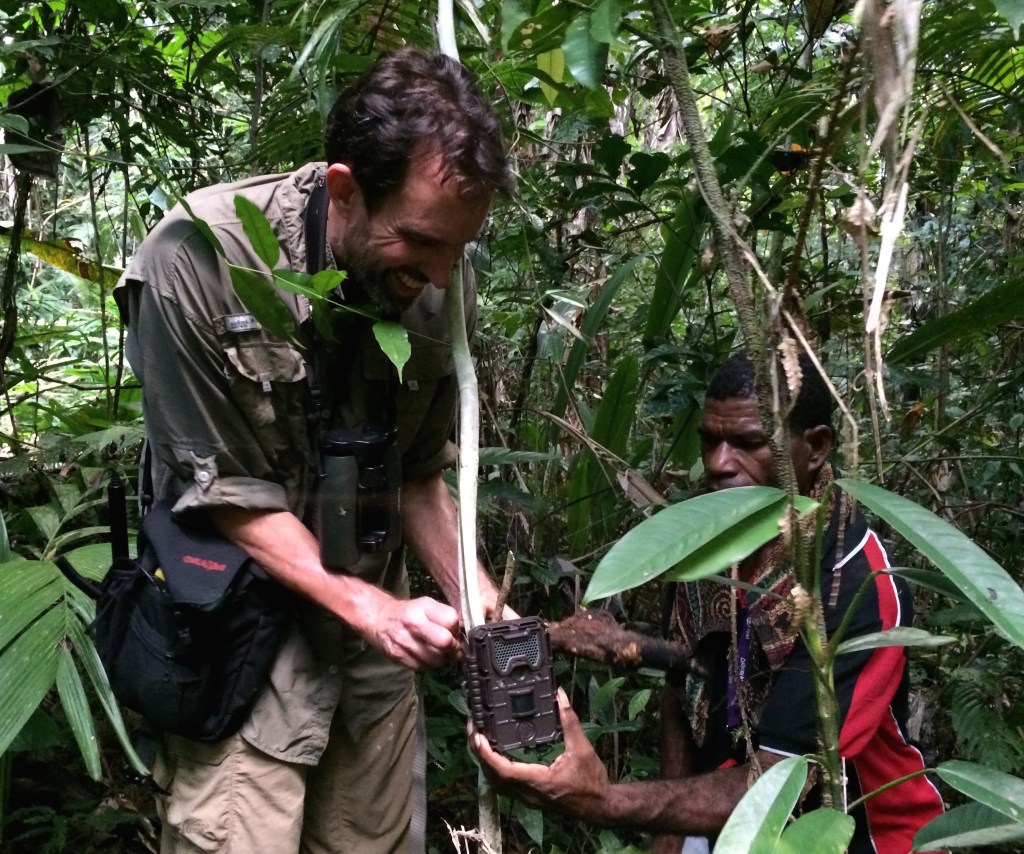


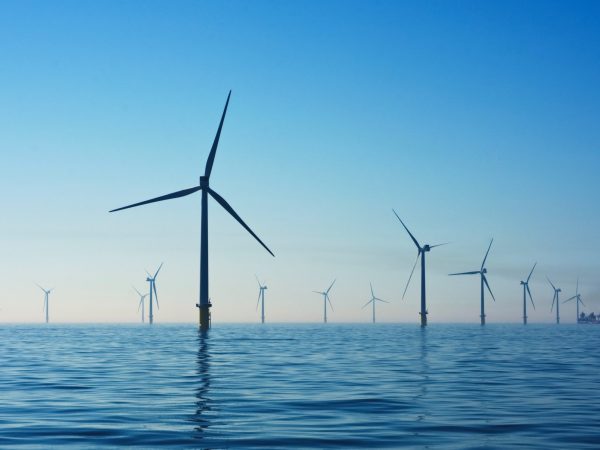
Thanks for finally writing about > 7 Science Innovations That Are Changing Conservation – Cool Green Science Earth Connection Keto
I have to make a new idea project…. And i don’t have any idea please give me some ideas
I have to made a new idea project….. And i don’t have any idea please give me some ideas
I <3 Science.
Let me know if you receive this. It looked interesting to me. Russ M
These projects are vital and worthy applications of technology. May their full potential for helping to save our precious planet be realized.